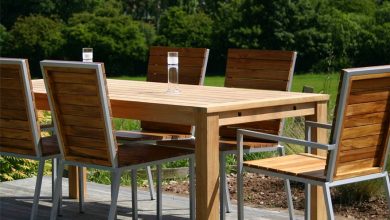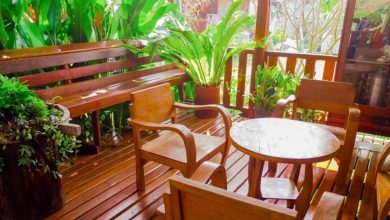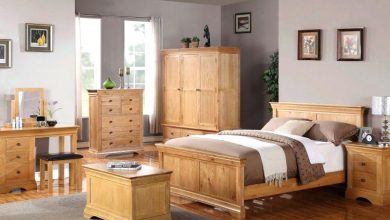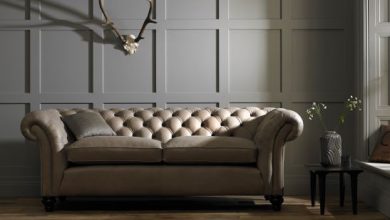Furniture
A Guide to Caring for Your Antique Furniture
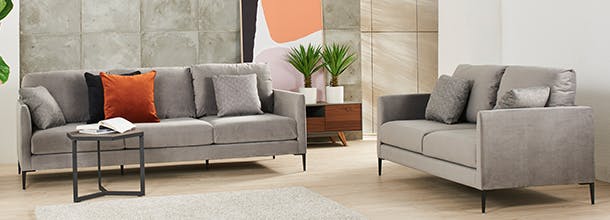
Introduction
An antique furniture is more than just pieces of expensive wood. For some, an antique chair is a piece of history with fascinating stories attached to it while others treat it as a prized family heirloom that needs to be passed to the next generation. If your furniture is broken, you get the professionals to fix it by searching for “furniture repair near me”. However, with proper care, you may not need to call the repair services at all. Let’s figure out how you can care for your antique furniture:
The Guide
- Light – Antique furniture is delicate and can be affected by the small variations in the surrounding conditions. Light is one such environmental factor that affects your antique furniture. Harsh sunlight or ultraviolet light and certain artificial light sources can harm your furniture and damage the wax finishes. It can also fade away stains, dyes, and paint layers. That’s why you should always store and display antique furniture away from direct sunlight or strong and very bright artificial light. If you need to keep a chair near the window, make sure to use a UV window film or use thick curtains to reduce the amount of direct sunlight as much as possible. The goal is to minimize any harsh source of light.
- Temperature and moisture – If you keep furniture in a place, it gets used to the ambient conditions. If the room temperature is steady and changes ever so slightly with the change of seasons and if the humidity levels also rise or fall expectedly, then there is no harm to your furniture. However, sudden drastic fluctuations can do serious harm to your antique furniture. For instance, if you shift the furniture from an HVAC-controlled room to a chilly attic or a damp basement, the furniture piece would suffer some serious damage.
The wood will expand and shrink rapidly, weakening the joints and glues. The metal nails or other hardware used on the furniture may be corroded and you may encourage mold formation. That’s why you should keep furniture away from windows, air vents, and heat sources. Also, make sure to open sections of the furniture that remain closed most of the time. It promotes good ventilation and prevents mold.
- Display – Improper display can be due to all sorts of reasons. It can cause light damage like minor scratches and dents to major destruction like warping, abrasions, and stains. For instance, if you spill a wine bottle on furniture, the alcohol content is enough to destroy the shine and finish of the polished surface. That’s why you should be very careful while displaying furniture. Make sure to use wedges, wooden blocks, or other mechanisms to keep furniture level on the floor. This prevents warping. If you have brick or tile flooring that gets hot or cold too quickly, make sure to use a rug under the furniture. You don’t want drastic changes in temperature to the furniture.
As mentioned above, you also need to be careful about keeping antique furniture away from fireplaces, furnaces, and other sources of heat. As elegant as it may look, an incandescent bulb can ruin the antique table with its heat, if there isn’t a sufficient gap between them. Also make sure to use layers of textile or mylar when you put up showpieces, trophies, figurines, glass, crockery, or anything else worth displaying on the surface of antique furniture. You don’t want scratches to ruin that prized Hepplewhite shelf.
- Handling – Poor handling is one of the major reasons for the deterioration of antique furniture. When you aren’t careful about moving an antique chair or improperly lifting an antique table, you may weaken the legs, compromise the strength of the joints and shake up the structural integrity of the rails. Moreover, perfume residues, the natural oils from your skin, and dirt from your hand can get transferred to the furniture surface and cause unwanted chemical reactions. Moreover, if you have rings on your finger or even have a pin hanging from a loose apron, it can scratch the surface of the furniture. All of that can be avoided with careful handling.
Before you move a piece of furniture, make a visual inspection to know which positions would be perfect to lift the furniture without damaging it. Remove all jewelry, badges, lose clothing and wear nitrile or cotton gloves while you handle the antique piece of furniture. This prevents oils and residues from passing over to the wood and also gives you a good grip. It’s also important that you lift the piece of furniture instead of dragging it on the floor. It causes surface damage and also can weaken the legs of the furniture. If the piece is too large and heavy, you can use dollies, straps, and the help of family members, friends, or neighbors.
- Pests – Antique furniture is usually made from organic matter that is a feast for all sorts of insects and pests. For instance, rats and cockroaches can feed on a piece of furniture and destroy its polish with their excrements. You don’t want animals and insects to stain your furniture. Moreover, insects that are specialized in destroying wood can be very dangerous for antique furniture. For instance, tiny larvae can eat away the grain and destroy the beautiful graining pattern on an antique piece.
The same larvae mature into beetles that can bore through the wood surface and leave those ugly holes on your prized possession. That’s why you should often dust and clean your furniture and also include polishing in the regular maintenance plan. Also, make sure that you keep antique furniture in a controlled room with minimal moisture since pests love humid environments. If you suspect pests are boring through your furniture, you should immediately get it checked by a specialist.
Conclusion
As you can see, regular maintenance and avoiding certain things can help you keep your antique furniture in pristine condition. However, if the furniture is extremely old and needs repair, you can search for “furniture repair near me”.


